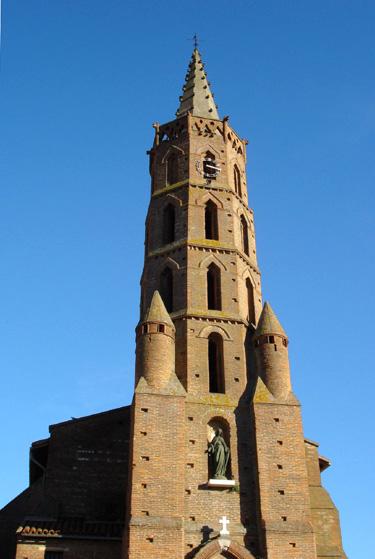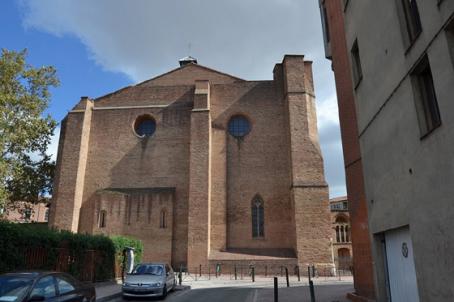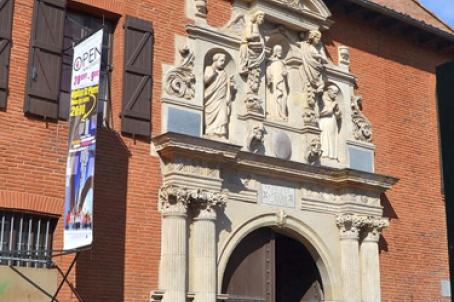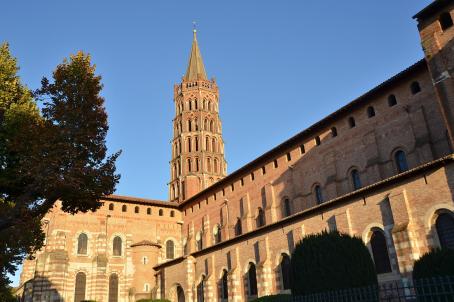Church of Saint-Pierre

Right in the centre of Blagnac, on the small square planted with trees is the Saint-Pierre church. It is a monument of the XIVth century. This remarkable red brick construction is one of the symbols of this town. It should be noted that the church Saint-Pierre underwent during the centuries many outrages which were more or less erased by restorations.
About this building
The existence of a church on this site is certified by a donation of William XI to the chapter of Saint-Sernin of Toulouse in 1098. The church, dating from the 12th century, was vaulted in the 15th century. The nave ends in a polygonal vaulted cross-vaulted sanctuary with liernes and tiercerons. On the facade, the bell tower forms a porch and is rib vaulted on the ground floor. It is an octagonal bell tower with four floors. On the first floor, two turrets provide the transition between the square porch and the octagonal tower. The gallery and the spire at the end of the tower are modern.





